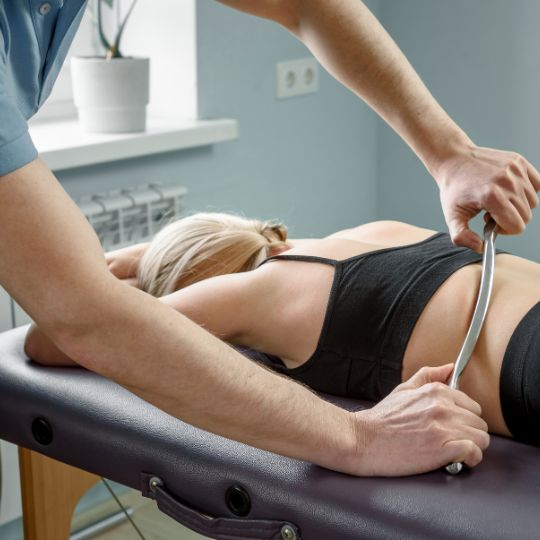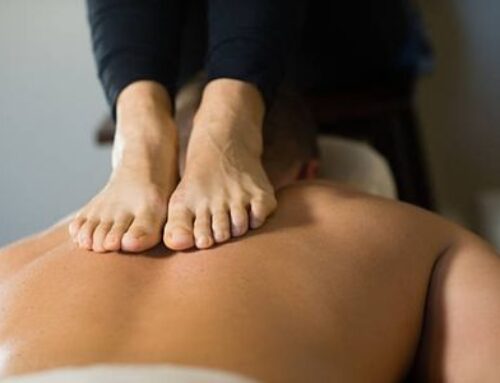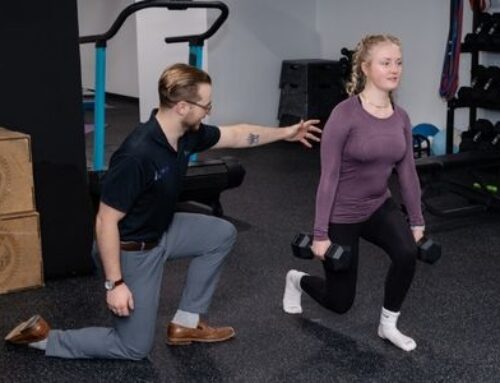Over the past few years, there has been a surging use of Instrument Assisted Soft Tissue Mobilization (IASTM) within the sports medicine community. Have you ever come across those muscle scraping videos on your social media late at night? Do you wonder why it’s being done? Well that’s exactly what I will be talking about today.
WHAT IS INSTRUMENT ASSISTED SOFT TISSUE (IASTM)?
Instrument assisted soft-tissue mobilization (IASTM) is a manual myofascial technique used by trained providers. The “instrument” is a tool that is used with specific compressive gliding movements to mobilize muscles and fascia. Oftentimes providers combine this with active movements for a deeper tissue contact and a more targeted treatment.
HOW DOES IASTM WORK?
There have been different instruments developed over time, with some of the most popular IASTM brands being: Graston, Rockblades, ConnecTx, and HawkGrips. Regardless of the instrument, the goal of treatment is the same. Creating controlled microtrauma within the tissues being treated. Promoting blood flow to the area creates an inflammatory response. Although inflammation is often thought to be a bad thing, a small amount of inflammation is necessary for the healing process. You can often see this with chiropractic care, massage therapy, physical therapy and post-workout. You know that soreness that you feel? That’s because of inflammation! Similar to vacuum cupping capillaries are broken, at a surface level, with the scraping of the tool. This sometimes leads to a small amount of bruising. But the more blood flow we create, the more nutrition we are bringing to our cells!
According to the Journal of Exercise Rehabilitation, practical application of IASTM for soft tissue rehabilitation should include six steps:
- Examination
- Warm up
- IASTM
- Active stretching
- Strengthening exercises
- Cryotherapy
Cryotherapy or cold therapy, such as an ice pack is recommended for 10-20 minutes post-treatment. Icing can limit bruising, prevent soreness and enhance tissue recovery. Staying adequately hydrated before and after treatment is important to assist in the bringing oxygen and nutrients to the tissues. Hydration will also reduce residual inflammation to accelerate the healing process (Kim et al., 2017).
HOW IS INSTRUMENT ASSISTED SOFT TISSUE DIFFERENT?
IASTM helps to break down scar tissue. Scar tissue is made up of the same protein, collagen, as normal tissue. However, scar tissue is different from normal soft tissues. The connective tissue fibers in scar tissue are laid down in an irregular pattern. Scars are harder, tighter tissues which can restrict normal mobility. Scar tissue develops for multiple reasons. Typically, after a sports injury, post-surgery, or with repetitive activities. This is our body’s way of reinforcing injured or weak tissues and is a normal process. Because scar tissue is a physically weak point for our bodies IASTM is used in combination with strength training to prevent future injury. By breaking down scar tissue and reducing myofascial restrictions, both therapeutic and neurophysiological effects are seen. Including the reorganization of tissue fibers resulting in improved resilience of muscle, tendons and ligaments. This contributes to improved range of motion and improved pain perception.
WHAT TYPES OF CONDITIONS CAN IASTM BE USED TO TREAT?
IASTM has been clinically proven to be an effective treatment strategy for various soft tissue injuries. Including but not limited to:
- Costochondritis, trigger finger, shin splints, plantar fasciitis, shoulder pain, bursitis, lower back and SI pain, neck pain, muscle strains and overuse injuries.
The majority of research for IASTM has been completed on chronic tendon injuries, such as medial epicondylitis (golfer’s elbow), lateral epicondylitis (tennis elbow), Achilles tendinitis, and plantar fasciitis. Tendons are strong flexible tissues made up of collagen which connect your bones and muscles. They allow for the transmission of muscle strength to the joints and play a large role in movement mechanics. Tendons have a very poor blood supply and when injured, can have a delayed healing process. This is why tendon injuries may not respond well to other traditional treatments.
WHO SHOULD AVOID IASTM?
Certain populations should talk to their primary care provider before receiving IASTM. These populations include individuals with: cancer, kidney dysfunction, pregnancy, rheumatoid arthritis, varicose veins, osteoporosis, lymphedema, fracture, chronic regional pain syndrome, use of certain medications (blood thinners, steroids, or NSAIDs). Patients with the following are unable to receive IASTM: open wounds, unhealed sutures, blood clotting, uncontrolled high blood pressure, skin infection, hematoma, myositis ossificans or unstable fractures (Kim et al., 2017).
When it comes to treating soft-tissue injuries there are many different approaches that a provider can choose to take. At Pinnacle Hill Chiropractic, we have providers trained in a multitude of various manual therapy techniques, including instrument assisted soft-tissue (IASTM), Active Release Techniques (ART)massage therapy, kinesiology-taping and more. If you think IASTM might be a part of your recovery, schedule an appointment with one of our providers HERE. You can also call our office at 585-444-7325 for more information. Our team will create a treatment plan specific to your goals.
FREQUENTLY ASKED QUESTIONS (FAQ)
Q: What are the negative side effects of being treated with IASTM?
A: Side effects that may appear after treatment are slight bruising and soreness. This typically appears more with soft tissues that have been injured for a longer period of time.
Q: Is treatment painful?
A: Treatment may induce some discomfort, especially around areas that are already sore or painful. Some pressure is necessary in order to get deep enough to reach the scar tissue. However, treatment should not be painful. Always communicate with your provider about how you are feeling during your treatment.
Q: Who can perform IASTM?
A: IASTM is included in the curriculum for chiropractors and physical therapists in some American colleges. However, its use is growing in popularity within the sports medicine and athletic training communities.
Q: How long is the treatment for IASTM?
A: Typical treatments are approximately 15-20 minutes including warm up, IASTM treatment, active stretching and strengthening. Sessions are typically 1-2 times per week for 4-5 weeks. Remember treatment length and frequency depends on the individual and the severity of the injury.





